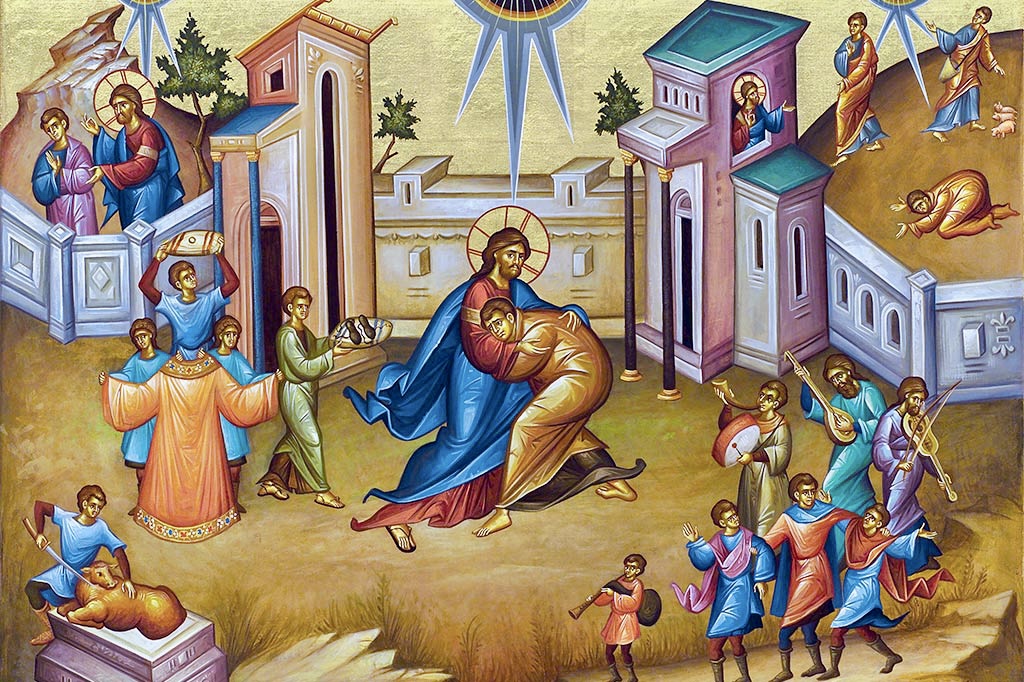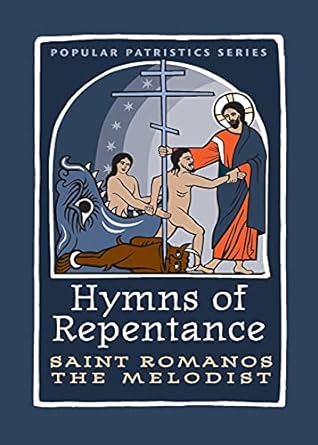
Dear brothers and sisters,
On the Sunday of the Prodigal Son, in our preparatory Sundays before the the Great Fast, my homily touched upon the patristic interpretation of the killing of the calf for the celebratory meal for the return of the dissolute son, and some of you were interested in the symbolism of the calf, representing Christ, in both salvific and eucharistic terms.
As I said on that day, the generosity shown by the father was not without cost, as represented by the father’s gifts and the celebratory meal, which – for the Church Fathers – was rich in sacramental imagery, showing the Holy Mysteries of the Church to be central to the restoration of the fallen, and the reconciliation of prodigal humanity with God, through the Church, represented by the household of the merciful father, who saw his returning son from far off… which means that he was constantly looking and anticipating that longed-for return.
In the robe brought to clothe his dirty and shabby son, who had fallen to looking after swine and eating pigs’ swill, we see the symbol of baptismal cleansing and the baptismal robe, explored by St Romanos the Melodist in his kontakion sequence “On the Prodigal Son”, originally intended for the second Sunday in Lent, explores this with rich allegorical imagery.
“Quickly, give my child the first robe, / which the baptismal font weaves for all… For I judge it improper to see unprovided or unadorned, the one who has run to me in repentance and has been found worthy of forgiveness, / Clothe him with the robe of grace, as I have commanded, I the Master and Lord of all the ages.”
In the placing of the ring upon his finger (a signet ring with its seal), we see the symbol of anointing with oil of the catechumens in the name of the Trinity, and chrismation – the seal of the gift of the Holy Spirit.
St Romanos alludes to the seal/sealing, symbolised by the ring, saying that
“It is a pledge of the undivided Trinity, / To guard him since he has recourse to it, so that when he displays his seal it may appear that he is my son, the son of the ruler of all.”
In the killing of the calf, we see the image of sacrifice, centred upon Christ, having given Himself for us on the Cross, continues to give Himself to us in the great banquet of the Divine Liturgy.
In the icon of the Hospitality of Abraham, we also see the calf as a sacrificial and eucharistic image, with its head in the dish at the centre of the altar-like table around which the three angelic visitors sit. The central angel, recognised in Church Tradition as the Angel of Great Counsel – the Pre-Incarnate Saviour, Himself – stretches out to bless the dish: an image of Christ as both the Offering and the One Who offers, as both High Priest and the sacrifice, and in this, St Andrei (Rublev) of Makovetz and other iconographers were drawing upon patristic tradition, in alluding to Christ as the Eucharistic offering.
With allegorical reference to Holy Baptism, in St Romanos’s hymn, the father commands the servants,
“Let us behold a supper marvellously spread / for the former prodigal now becomes temperate. / For his father, or rather the Father of all humankind, / receives him repentant, in His love for humankind, rejoicing at his repentance says to His servants, “Hurry, make ready for us the all-holy supper. / Hurry, above all sacrifice the calf to which a virgin heifer gave birth, because my son was lost before / and has now been found. But let us celebrate; / he was dead and has returned to life, he whom I have taken in my heart, the Master and Lord of all the ages.
O priests, my faithful servants, sacrifice this calf and, to all who are worthy of my supper, give to eat the spotless calf, pure in every way, / fattened from the unsown earth that he fashioned.* / Give them to drink a precious drink, / blood and water that springs from his side for those who believe. / Eat this then, all of you always, / For though it is not divided, not separated, not consumed, but satisfies all unto the ages, / for he offers himself as all-holy food, the Lover of mankind, the Master and Lord of all the ages.”
*(i.e. the Theotokos)
Through the many layers of rich imagery, St Romanos reminds us that our return and reconciliation with the Father is not in abstraction, but within the physical-spiritual household of the Church, which the Saviour has established unto the ages, as His theandric Body in the world.
It is not simply through repentance, but through the Holy Mysteries that the Lord calls us back to His household, to be reclothed in the garment of light with which Adam and Eve were invested, to be sealed in the Name of the Holy Trinity as the heirs of the Kingdom, to receive the Gift of Divine Grace, and to be nourished in the banquet in which the Saviour offers Himself for us, having made clear that like the Old Passover, in the New Passover anticipated and perpetuated in His Mystical Supper, we must be partakers: “Verily, verily, I say unto you, unless ye eat the flesh of the Son of Man and drink His blood, you have no life in you.”
As prodigal children, the Heavenly Father looks for our return, not simply waiting, but looking for us and seeking us out. Let us hasten, through repentance within the community and household of Faith, knowing that He awaits us, ready with the new robe, the seal that claims us as His, giving us a place at the table of His Divine and Mystic Banquet.
In repentance we cry with St Romanos,
“O Son and Logos of God, Creator of all things, we your unworthy servants ask and implore you, have mercy on all, who call upon you. / As you did the prodigal son who had sinned. / Accept and save through compassion those who in repentance run to you, O King, crying, “We have sinned… Make us partakers of your supper, as you did the prodigal son, you he Master and Lord of all the ages.”
+
I very much recommend buying and reading:
Hymns of Repentance: St Romanos the Melodist – SVS Popular Patristics Series
